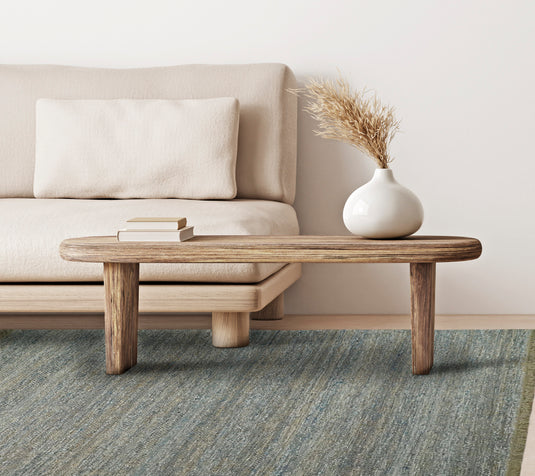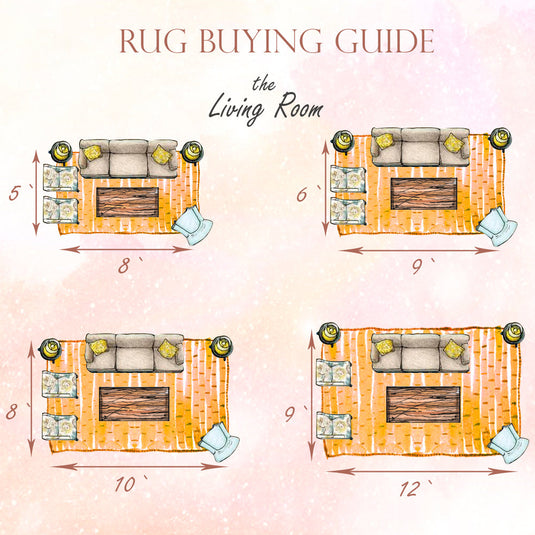Handknotted rugs are exquisite pieces of artistry and craftsmanship that bring warmth, beauty, and character to any space. Each handknotted rug is a labor of love, meticulously crafted by skilled artisans who pour their expertise and passion into every knot.
What sets handknotted rugs apart is the intricate and time-intensive process involved in their creation. These rugs are made by hand, with every individual knot tied around warp threads to form the pile.
Once the design is established, skilled artisans painstakingly weave each knot, following the pattern meticulously. Depending on the complexity of the design and the desired level of detail, a single rug can take weeks, months, or even years to complete. This dedication to craftsmanship ensures that each handknotted rug is a unique masterpiece, with no two rugs being exactly alike.
The origins of handknotted rugs can be traced back to ancient civilizations such as Mesopotamia, Egypt, and China, where nomadic tribes and settled communities began weaving textiles for practical and decorative purposes. Early rug weaving techniques involved simple methods of knotting and weaving wool or other natural fibers to create functional floor coverings that provided warmth and protection from the elements.
Today, handknotted rugs continue to be crafted by skilled artisans in regions around the world, from the traditional weaving centers of Persia, Turkey, and India to emerging rug-making communities in Nepal, Morocco, and Afghanistan. Each rug tells a story of tradition, skill, and cultural heritage, embodying the timeless beauty and enduring craftsmanship of this ancient art form. As they grace homes, galleries, and museums with their exquisite designs and meticulous craftsmanship, handknotted rugs remain a testament to the enduring legacy of human creativity and ingenuity.
The Art of Handknotted Rug Making
- Delve into the meticulous process of handknotted rug production, step by step:
-
Design and Planning:
- A design is conceptualised in mind and then it is put together by using Autocad softwares and each knot is treated as each pixle.
- Traditional the designs were made with Hands using Pencil and later filled with water colors.
-
Material Selection:
- The material is selected keeping in mind the desired result, If soft and lusturous we can use silk or high quality wool,If coarse we use Handcarded wool or jute, If sustainable we use high quality wool or recycled wool and so on.
-
Dyeing:
- There are multiple dyeing techniques, depending on material to be dyed : Wool dyeing, Cotton dyeing , Silk dyeing Or Depending on the composition i.e. Eco Friendly Vegetable Dyeing or Chemical Dyeing.
- Each technique is carefully choosen to suit the material and desired result.
-
Weaving:
-
- Finishing: Finishing is equally important to weaving,The same rug can be made bright or antique using the right washing technique.Steps for finishing are:
-
Design and Planning:
- Clipping : The rug is sheared at desired Pile height .
- Washing : The rug is washed 2-3 times depending on the look one wants to achieve eliminating all the impurities and dust.
- Stretching : The rug is stretched out to make is straight and even.
- Binding : All the sides are then sewn with wool/silk to give the finished sides.
- Fringes : The fringes are prepared to keep the rug entact with the desired length of the fringes and also the style.
- Final Finishing : All the Extra cotton from the base is handpicked,Removed from the rug .
- Quality Inspection : Each rug is inspected from all aspects if approved it goes for packaging,If not it needs to go through any step of finishing again.
The Role of Artisans
- The Artisans are the ones who put together a designers thought in reality.
- Th Artisan Patiently checks each Pixle and Color attached to it and weaves it on the Loom,It can take 15 days or 15 months to weave a rug depending on the Quality and the size of the Rug.
- Weaving a Handknotted Rug requires Skill which is generally Passed on to generations.
- As the art of Handknotted Rugs are fading away as people are moving towards machine made rugs which are cheaper and quickly available , The new genrations of weavers also shy away to learn this art.
- There are many training centers created to keep this art of weaving handknotted rugs alive .
- Each weaver have their specialities , some make persian knots , some make turkish knots , some make lower knots and some make finer knots.
- The variation in a Handknotted rug depends on the way a weaver weaves .
Quality and Authenticity
- Handknotted Rugs come in several variety, The quality is determined by the Knots woven per Square Inch.
- The Knots per square Inch can be 15 KPSI to 150 KPSI or more, This allows one to make intricate designs with more detailing and the strength and longivity of the rug increases with more knots.
- But it doesnot mean that the lower knots are machine made,They are made with hands,Just that the lower knows allows to produce rugs quicky at cheaper prices.
- The higher the knot is the better is the quality , making it long lasting, Hence it is expensive.
Cultural Heritage and Global Impact
Each of these rug-making regions boasts its own unique techniques, styles, and traditions, resulting in a diverse array of rugs that showcase the artistry and cultural heritage of their respective communities.
In a world of mass-produced goods, there's something truly special about handcrafted treasures that bear the mark of artisanal craftsmanship. When it comes to home decor, few pieces embody this dedication to artistry and tradition more than handcrafted rugs. Here's why you should take a moment to appreciate the craftsmanship behind each rug and consider investing in these timeless treasures for your home:
1. A Labor of Love
Handcrafted rugs are more than just floor coverings; they're works of art meticulously crafted by skilled artisans who pour their passion and expertise into every knot. From the selection of the finest materials to the intricate weaving techniques passed down through generations, each rug is a labor of love that reflects centuries-old traditions and craftsmanship.
2. Unique and Authentic
Unlike mass-produced rugs churned out by machines, handcrafted rugs are one-of-a-kind masterpieces that bear the distinctive touch of their makers. No two rugs are exactly alike, with subtle variations in design, color, and texture that add character and charm to any space. Investing in a handcrafted rug ensures that you're bringing a piece of history and authenticity into your home.
3. Timeless Beauty and Quality
Handcrafted rugs are built to last, with superior quality and attention to detail that stand the test of time. These timeless treasures not only add warmth and beauty to your home today but also become cherished heirlooms passed down through generations. With proper care and maintenance, a handcrafted rug can retain its beauty and value for decades to come, making it a worthwhile investment for the future.
4. Supporting Artisan Communities
By investing in handcrafted rugs, you're not just acquiring a beautiful piece for your home; you're also supporting artisan communities and preserving traditional craftsmanship around the world. Your purchase directly contributes to the livelihoods of skilled weavers and their families, empowering them to continue practicing their craft and preserving cultural heritage for future generations.
5. A Personal Connection
Each handcrafted rug tells a story of creativity, skill, and cultural heritage that adds depth and meaning to your home decor. Whether it's a Persian rug woven in the heart of Iran or a Moroccan rug crafted by Berber artisans in the Atlas Mountains, there's a personal connection that comes with owning a handcrafted rug that simply can't be replicated with mass-produced alternatives.
As you embark on your journey to enhance your home decor, take a moment to appreciate the artistry and craftsmanship behind each handcrafted rug. Consider investing in these timeless treasures not only for their beauty and quality but also for the rich history and cultural significance they bring into your space. With a handcrafted rug adorning your floors, you're not just decorating your home; you're celebrating the enduring legacy of artisanal craftsmanship.
Explore our collection of handcrafted rugs and discover the perfect piece to elevate your home decor today!










